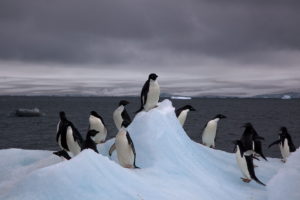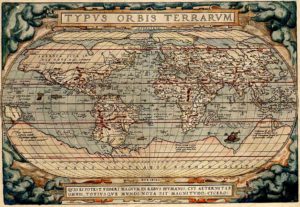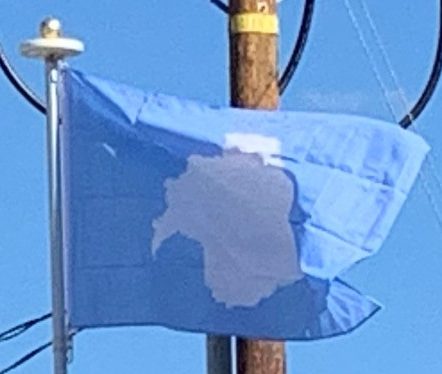
The first formal use of the name “Antarctica” as a continental name in the 1890s is attributed to the Scottish cartographer John George Bartholomew.
The long-imagined (but undiscovered) south polar continent was originally called Terra Australis, sometimes shortened to ‘Australia’ as seen in a woodcut illustration titled Sphere of the winds, contained in an astrological textbook published in Frankfurt in 1545. Although the longer Latin phrase was better known, the shortened name Australia was used in Europe’s scholarly circles.
Then in the nineteenth century, the colonial authorities in Sydney removed the Dutch name from New Holland. Instead of inventing a new name to replace it, they took the name Australia from the south polar continent, leaving it nameless for some eighty years. During that period, geographers had to make do with clumsy phrases such as “the Antarctic Continent”. They searched for a more poetic replacement, suggesting various names such as Ultima and Antipodea. Eventually Antarctica was adopted in the 1890s.
History:
Antarctica has no indigenous population, and there is no evidence that it was seen by humans until the 19th century. However, in February 1775, during his second voyage, Captain Cook called the existence of such a polar continent “probable” and in another copy of his journal he wrote:”[I] firmly believe it and it’s more than probable that we have seen a part of it”.
However, belief in the existence of a Terra Australis—a vast continent in the far south of the globe to “balance” the northern lands of Europe, Asia and North Africa—had prevailed since the times of Ptolemy in the 1st century AD.

Even in the late 17th century, after explorers had found that South America and Australia were not part of the fabled “Antarctica”, geographers believed that the continent was much larger than its actual size. Integral to the story of the origin of Antarctica’s name is that it was not named Terra Australis—this name was given to Australia instead, because of the misconception that no significant landmass could exist further south. Explorer Matthew Flinders, in particular, has been credited with popularizing the transfer of the name Terra Australis to Australia. He justified the titling of his book A Voyage to Terra Australis (1814) by writing in the introduction:
There is no probability, that any other detached body of land, of nearly equal extent, will ever be found in a more southern latitude; the name Terra Australis will, therefore, remain descriptive of the geographical importance of this country and of its situation on the globe: it has antiquity to recommend it; and, having no reference to either of the two claiming nations, appears to be less objectionable than any other which could have been selected.
European maps continued to show this hypothesised land until Captain James Cook’s ships, HMS Resolution and Adventure, crossed the Antarctic Circle on 17 January 1773, in December 1773 and again in January 1774. Cook came within about 75 miles of the Antarctic coast before retreating in the face of field ice in January 1773.
